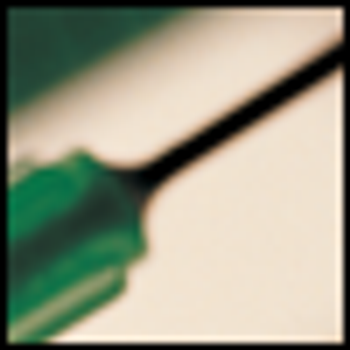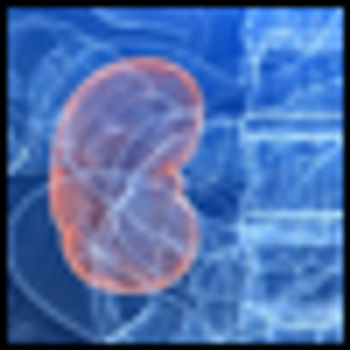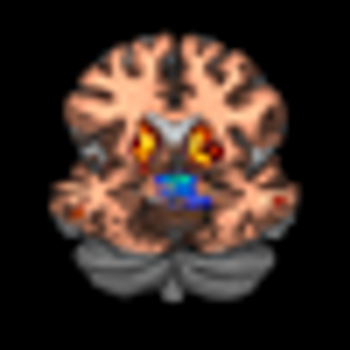
Ongoing shortages of several psychotropic medications have wreaked havoc among patients and their families, caused frustration and reluctant prescription switches among physicians, and prompted investigations by Congress.

Ongoing shortages of several psychotropic medications have wreaked havoc among patients and their families, caused frustration and reluctant prescription switches among physicians, and prompted investigations by Congress.

Currently, there are 350,000 Americans who receive maintenance dialysis for renal failure, and this predominantly elderly population with multiple comorbidities is growing.

The goal of palliative care is to prevent and relieve suffering and to improve quality of life for people facing a serious, complex illness.

A brief report recently published in Science confirms the key role of dopamine (DA) in impulsive behavior. The researchers found that impulse control directly correlated with the amount of DA released in the striatum.

As many as 80% of patients who use herbal preparations and other natural products regard these therapies as the primary treatment of their ADHD symptoms.

Pediatric bipolar disorder (PBD) is a serious psychiatric illness that impairs children’s emotional, cognitive, and social development. PBD causes severe mood instability that manifests in chronic irritability, episodes of rage, tearfulness, distractibility, grandiosity or inflated self-esteem, hypersexual behavior, a decreased need for sleep, and behavioral activation coupled with poor judgment. While research in this area has accelerated during the past 15 years, there are still significant gaps in knowledge concerning the prevalence, etiology, phenomenology, assessment, and treatment for PBD.

I first met 22-year-old “Linda” when she was brought to the emergency department (ED) after a drug overdose. Although the drug Linda had ingested-clonazepam-was a CNS depressant, she did not appear groggy or sedated. In fact, her speech was rapid and pressured; she showed marked psychomotor agitation, which was demonstrated by her twitching feet and the incessant twisting of her hair. This presentation suggested a paradoxical response to her medication. Her chief concern was, “I feel as if I am going to come out of my skin.” I was puzzled.

The prescription of psychotropic medications for children continues to be a controversial area of medical practice. In the United States, academic medical centers, medical researchers, prescribers, and the FDA are all ostensibly committed to the common goal of disseminating accurate information and promoting treatment based on scientific evidence. In the United States, however, medical treatment takes place in the context of legal and pervasive direct-to-consumer advertising (DTCA). There are concerns about the potential for DTCA to affect public health negatively and to increase health care costs.

The words attributed to Socrates resonate with the perspectives of many contemporary parents and clinicians.1 The endurance of the concern suggests something fundamental about the psychopathology of deviant, disruptive behavior of youth. Yet clinicians struggle to understand its origins, to help parents control their children, and to help the children control themselves. Clinically, this manifests in failed pharmacological treatments, incompleted courses of individual therapy, problems in engaging families in treatment, and controversies over which therapy is most effective.

A large percentage of youths use and abuse psychoactive substances. According to the 2007 Monitoring the Future (MTF) survey, the percentage of US adolescents who used illicit drugs or drank alcohol continued a decade-long drop, revealing that 19% of 8th graders, more than 36% of 10th graders, and 47% of all 12th graders have taken an illicit drug (other than alcohol) during their lifetime.1 According to the National Survey on Drug Use and Health, the rate was 3.3% for misuse or nonmedical use of prescription drugs.2 The misuse of prescription drugs among adolescents was second only to marijuana use. In fact, prescription drugs increasingly have become a part of the repertoire of drug-using adolescents.

Youths aged 6 to 16 years with any subtype of ADHD participated in the study. Comorbid bipolar disorder, pervasive developmental disorder, psychotic illness, anxiety disorders, and tic disorders were exclusionary criteria. Patients with other comorbid psychiatric disorders, including major depressive disorder, were allowed to participate if ADHD was the primary diagnosis.

Medication adherence, especially in children and adolescents, is a complex problem that is poorly understood and underresearched, yet it is a clear barrier to effective treatment and is frequently encountered in everyday clinical practice.

Although several antimanic agents are available to treat individuals with bipolar disorder (BD), many patients have a less than satisfactory response or experience adverse effects.1 With the exception of lithium, all of the current antimanic agents are either anticonvulsant or antipsychotic drugs. It is remarkable that no drug has been developed specifically for BD, especially because this illness was conceptualized more than a century ago.

Although valiant efforts have been made to reduce access to the chemical precursors of methamphetamine, it is likely that methamphetamine will remain accessible and inexpensive, and costs associated with increased use will continue to rise.

Although the percentage of US adolescents who use illicit drugs or drink alcohol continued a decade-long reduction in 2006, according to the Monitoring the Future (MTF) survey,1 the use of prescription drugs, such as narcotics, tranquilizers, sedatives, and stimulants remains at relatively high levels. Concerns about marijuana and alcohol, which are easily the most prevalent substances misused by adolescents, have obscured the increasing problem of prescription drug misuse in youth. This article presents information on prescription drug misuse and diversion based on surveys of high school and college students.

Widespread media reports and billboard campaigns decrying a methamphetamine epidemic are drawing attention away from the greater and more entrenched use of cocaine, according to a National Institute of Drug Abuse (NIDA) scientist speaking at the American Society of Addiction Medicine's (ASAM) 38th Annual Medical-Scientific Conference, held in Miami, April 26 to 29.

Since its introduction in DSM-III in 1980, attention-deficit/ hyperactivity disorder (ADHD) has proved to be a developmental disorder with many causes and complex behavioral, cognitive, and emotional manifestations that can impair academic functioning, occupational achievement, social relationships, and self-esteem.

The American Academy of Child and Adolescent Psychiatry recently published a practice parameter with evidence-based guidelines for the assessment and treatment of children and adolescents with attention-deficit/hyperactivity disorder (ADHD). Recommendations for the best treatment practices were made based on empirical evidence and clinical consensus, and the strength of these recommendations was based on the extent and degree of these variables. This column will provide a summary of the parameter.

Response to Dr Wagner's Methylphenidate Treatment of ADHD in Preschoolers".

The comorbidity of anxiety disorders with bipolar disorder is a rule, not an exception, with a negative impact on both course and treatment outcome. So far, there are no guidelines or consensus for the treatment of this comorbidity.

This commentary arises from my concern about the superficiality that characterizes the process of diagnosing attention-deficit/hyperactivity disorder (ADHD) in children--usually followed by the prescription of one of the most powerful drugs on earth, methylphenidate.

Methamphetamine (MA) abuse is not a new problem in the United States, but the current epidemic is more widespread and presents with more pernicious consequences than in the past. MA, frequently called "speed," "crystal," "crank," "ice," or "tina," is a potent psychostimulant that can be swallowed in pill form or administered via intranasal, intravenous, or smoking route.

González-Pinto A, Aldama A, González C, et al. Predictors of suicide in first-episode affective and nonaffective psychotic inpatients: five-year follow-up of patients from a catchment area in Vitoria, Spain. J Clin Psychiatry. 2007;68:242-247.

SAN FRANCISCO -- Given the high prevalence of substance abuse in patients with attention deficit hyperactivity disorder (ADHD), psychiatrists need to consider comorbidity in assessment of both conditions.

Attention-deficit/hyperactivity disorder (ADHD) is often underappreciated and inadequately treated in adults. Long thought to be a disorder of childhood, ADHD is now believed to persist into adulthood in approximately half of all cases.